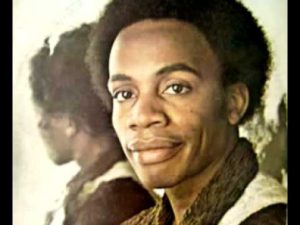Howard Tate had six hit singles in the late 1960s. He is perhaps best known for his association with the legendary songwriter and producer Jerry Ragovoy, who worked with Tate on most of his hits. But Tate’s story is one of loss, and ultimately, redemption.
He was born in Georgia but grew up in Philadelphia, which is where he began his singing career. In his teens, he was part of a gospel group which included Garnet Mimms. A subsequent group, the Gainors, also with Mimms, began to make R&B records for the Cameo and Mercury labels.
Mimms went on to success with his Enchanters, who had hits like “Cry, Baby,” and “Quiet Place,” while working with Ragovoy. He introduced Tate to the producer, who began to work with Tate using the cream of the crop of New York sessions musicians that a producer of Ragovoy’s status could request.
Tate and Ragovoy worked together from 1966-1968, making records for the Verve label. During that time they produced a string of blues and R&B hits that included three singles, “Ain’t Nobody Home,” “Look at Granny Run Run,” and “Stop,” that reached the Top 20 on the Billboard R&B chart. Tate was also a favorite with critics like Robert Christgau, who wrote that the singer and his producer brought out the best in each other.

After leaving Ragovoy, Tate worked with Lloyd Price and Johnny Nash, who produced an album for him called Howard Tate’s Reaction in 1970. Two years later, Tate was back with Ragovoy for a self-titled album for Atlantic Records. The album, which was reissued in 2003, included songs by Ragovoy, as well as covers of Bob Dylan’s “Girl From the North Country,” and “Jemima Surrender,” by Robbie Robertson and Levon Helm.
Tate made a few more records in the ’70s, but by the end of the decade he was done with the music business. He became a stockbroker, but when tragedy struck in the ’80s, and his teenage daughter died in a house fire, Tate turned to drugs, and ended up on the streets. He managed to turn his life around by the mid-1990s and worked as a preacher, and a counselor to other with drug problems.
It was a disc jockey from New Jersey who rediscovered Tate in 2001, and that year Tate played a show in New Orleans, his first in many years. Two years later, the singer reunited with the partner with whom he had the most success, Jerry Ragovoy, for an album called, appropriately, Rediscovered. The album included a new version of Ragovoy’s classic “Get it While You Can,” which Tate had recorded in the ’60s before it became a smash by Janis Joplin.
Howard Tate Live was released in 2004, A Portrait of Howard, produced by Steve Weisberg, followed in 2006, and the Jon Tiven-produced Blue Day came out in 2008.
“Howard and I danced for a few years before we actually made a record,” Tiven told me. “Jerry Ragovoy asked me to produce Howard because he was signed to Jerry’s production company and they weren’t getting along. So we started and stopped and then he did that album with that other dude (Steve Weisberg). When he finally got free and wanted to get into this, he was easy. (He) just had to make sure he got paid and then everything went well.”
The stirring comeback of Howard Tate came to an end in 2011 when he died of complications from leukemia at the age of 72.





Comments